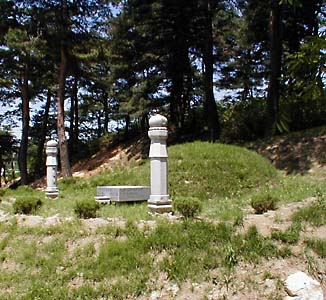

|
When former president Roh Moo-hyun shocked his nation and the world by taking his own life in 2009, he left behind
a letter for the people of Korea. In it he expressed his regret and apology for the ways he'd failed the people who
elected him. And I think that when he asked that his remains be cremated, he was sending another important message.
South Korea is a small country with a large population. It's about the size of Indiana, and it holds about 50
million people -- roughly the populations of New Hampshire, Massachusetts, Connecticut, New York, New Jersey, and
Pennsylvania put together. If that many people are living there, and if Korea's been in existence for 5,000 years,
think how many Koreans have died. I don't think anybody knows that number, but we do know how many graves Korea has today. It's not as big a number as you might expect, but still an imposing one: 20 million. And every year, burial mounds take over another 3.6 million square meters of Korea's land. Each is about 50 square meters. This isn't a trivial issue, because Koreans can't just bury people anywhere. Their Confucian traditions require reverence for the dead. It's disrespectful to bury your parents or grandparents in some nondescript plot far away from the family home. It's shameful to neglect burial sites; they have to be kept mowed and nicely landscaped. A surprising number of Koreans believe that their late ancestors' spirits can affect their lives. So if the family still owns its legacy land, there's no question of where burials will be. But as Korea becomes more mobile, people move farther and farther away from their ancestral homes. The tasks of maintaining the graves and returning to pay respects on traditional holidays have become a challenge for many of them. What if life intervenes and you can't get home on a holiday? One answer is to carry out your rituals from anywhere, thanks to services that, for a fee, will aim video cameras at your ancestors' graves. A better one is to cut down on the number of graves. That suggests cremation. In 1970, only about 10 percent of Korea's dead were cremated. But attitudes have changed. In 2000, the Korean government began funding public crematories. The following year, they passed a law requiring that human remains could only be buried for 60 years, and then they'd have to be exhumed and cremated. Given Korea's traditions, this change must have been controversial. But it had the intended effect. By 2005, over half of the deceased were immediately cremated instead of being buried. In 2008, the rate was 62 percent. Margaret and I passed the burial mound you see above on a walk near Kangnung's Green soju distillery (now controlled by the Lotte food and drink conglomerate). Does it protect the remains of one of the distillery's founders? We have no way to know. |